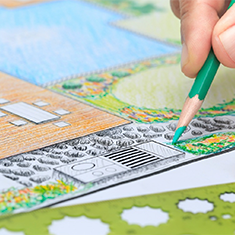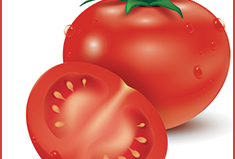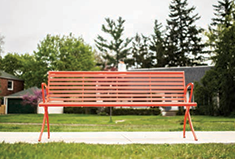Garden Planning 101
By Lisa Howard
AS SOON AS YOU HEAR THE FIRST BIRD CHIRP IN SPRING, you might think – “Garden!” And, then you might wonder how to go about creating one. While the kamikaze approach of wandering through a plant store and buying whatever strikes your fancy might work, you’re more likely to be successful if you think about some basic considerations first.
• If you’d like to let your inner floral designer bloom and arrange DIY bouquets to your heart’s content, look for showy, hardy flowers and accent plants that are clearly marked as “excellent to use in bouquets/as cut flowers.”
• If you’re a first-time food grower, choose plants that are easy to maintain and that quickly produce, like bush beans, tomatoes, peppers, lettuce and herbs. Bear in mind that pole beans (and peas) need structures to climb on and that bigger tomatoes and peppers will take much longer to grow and ripen than will smaller versions.
Zucchini, cucumbers, pumpkins and other squash grow well as long as they don’t get waterlogged — if their broad, cupping leaves spend too much time being wet, they’ll likely wind up attracting opportunistic molds like powdery mildew. Ditto for melons. Corn typically needs to be planted somewhat in quantity in order to be cross-pollinated and produce sizeable ears. Planning is key!
MSU’s Gardening in Michigan website has oodles of information about how to best map out your veggies in an article titled Planning a Smart Vegetable Garden.
• If you’d like to support pollinators, check out MSU’s Michigan Pollinator Initiative. You’ll find thoughtful articles like Pollinator Lawns, Pollinator Gardens and Pollinator-Supportive Trees. They even have a free online course called Pollinator Champions, if you’d like to become an MSU-Certified Pollinator Champion. On a national scale, the National Wildlife Federation offers resources that enable your garden to become a Certified Wildlife Habitat®: www.nwf.org/certify. Planting the kind of native plants that support pollinators also enriches your soil and regenerates the land.
• Aside from thinking about the overall shape and size of your garden, you’ll also need to map out how to get into it if you want to be able to walk through it to harvest food or flowers. Will you need to plan for a pathway? Make sure you’ll be able to easily water and tend to your plants and think about whether you want them to be permanent (perennials) or only last for one season (annuals).
• Stagger your plants! If you want to be able to view everything in your garden, put tall plants in the center/at the back and radiate outwards with progressively shorter plants. Not only will that maximize the aesthetic value of your garden, the shorter plants won’t be shaded into oblivion by their taller neighbors.
Perhaps most importantly, find out what your plants want and give it to them, whether that’s sun or shade, dry or moist soil, vining support or room to spread out or being generally warmer or cooler. If you make it easy for your garden to grow, you’ll be beautifully rewarded.



